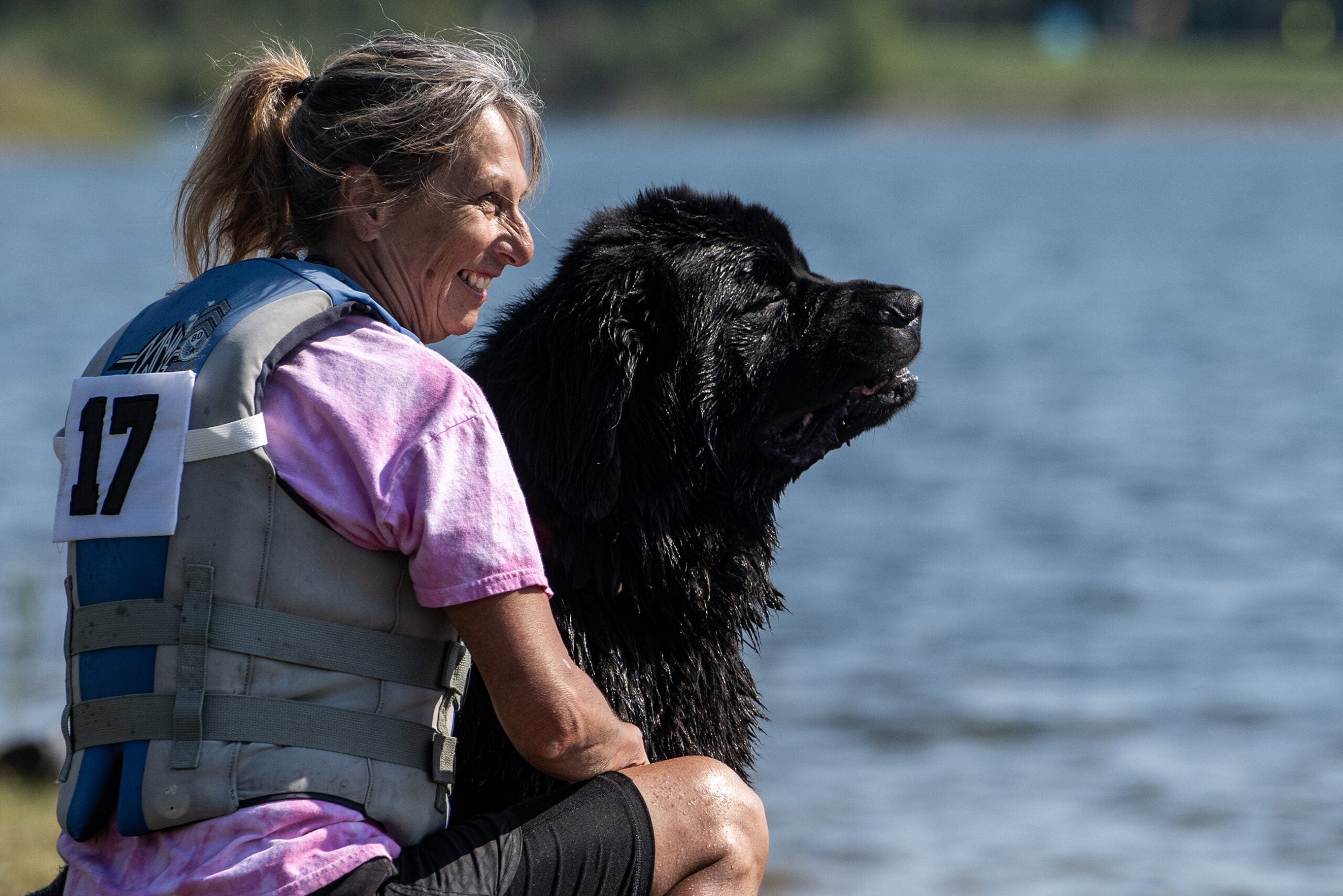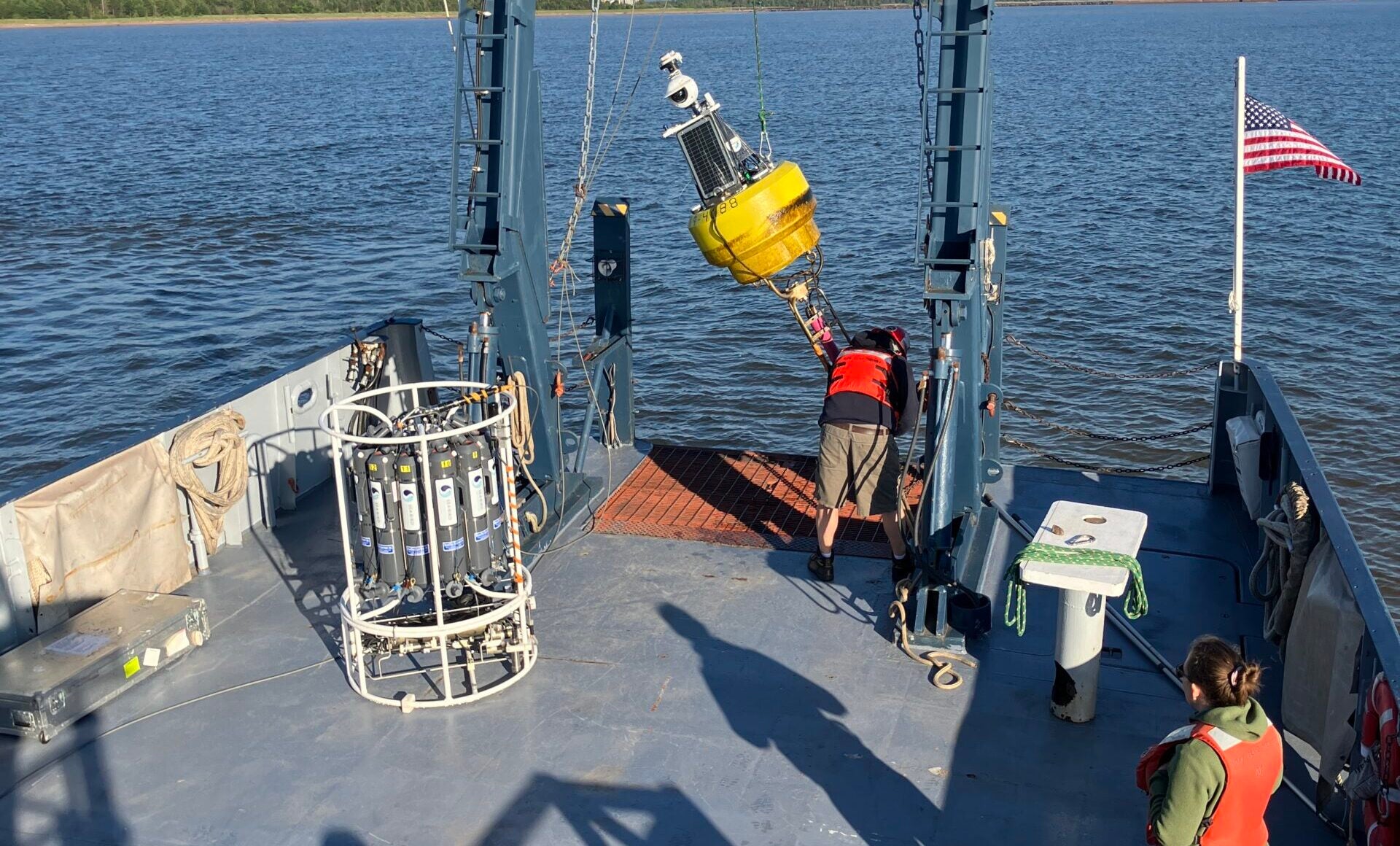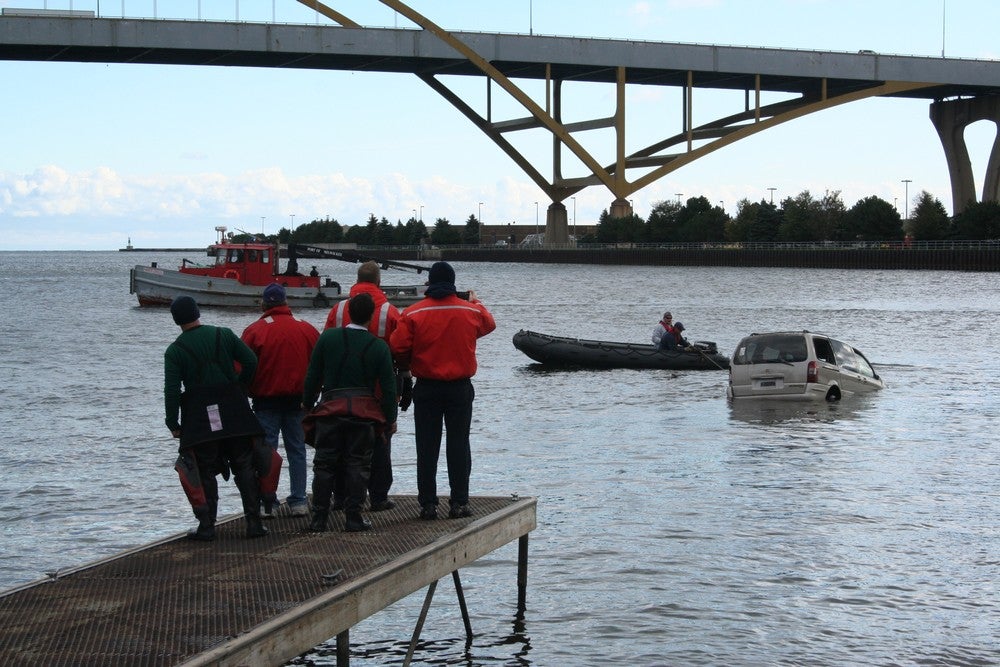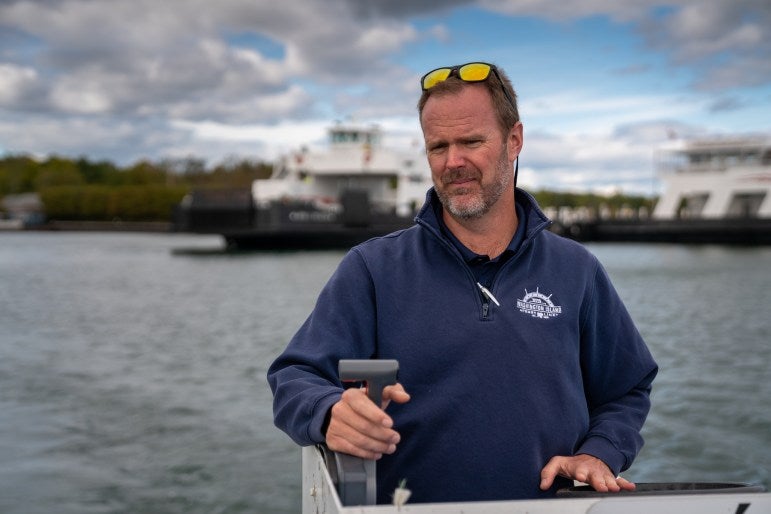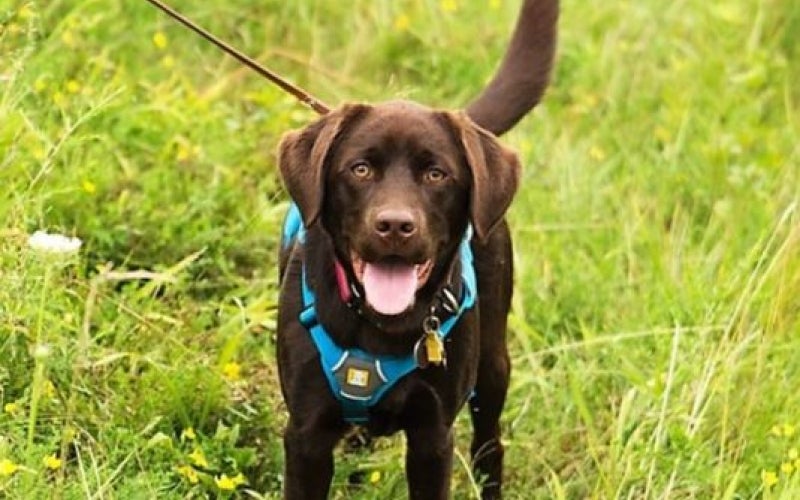A Newfoundland dog club covering most of Wisconsin tested the water rescue skills of its dog trainees over the weekend.
The Pleasant Prairie event aimed to “simulate the talents and instinct” of a breed literally made for the water, according to Dona Baker-Austin, a Wisconsin dog breeder and past club president.
Newfoundlands originate out of the Canadian province bearing the same name. They were bred to help people complete tasks on and around the water, Baker-Austin recently said on Wisconsin Public Radio’s “The Morning Show.”
News with a little more humanity
WPR’s “Wisconsin Today” newsletter keeps you connected to the state you love without feeling overwhelmed. No paywall. No agenda. No corporate filter.
“They helped fishermen with their nets and bringing in all their catches. And if someone fell overboard, I believe they would have jumped in and saved them,” Baker-Austin said.
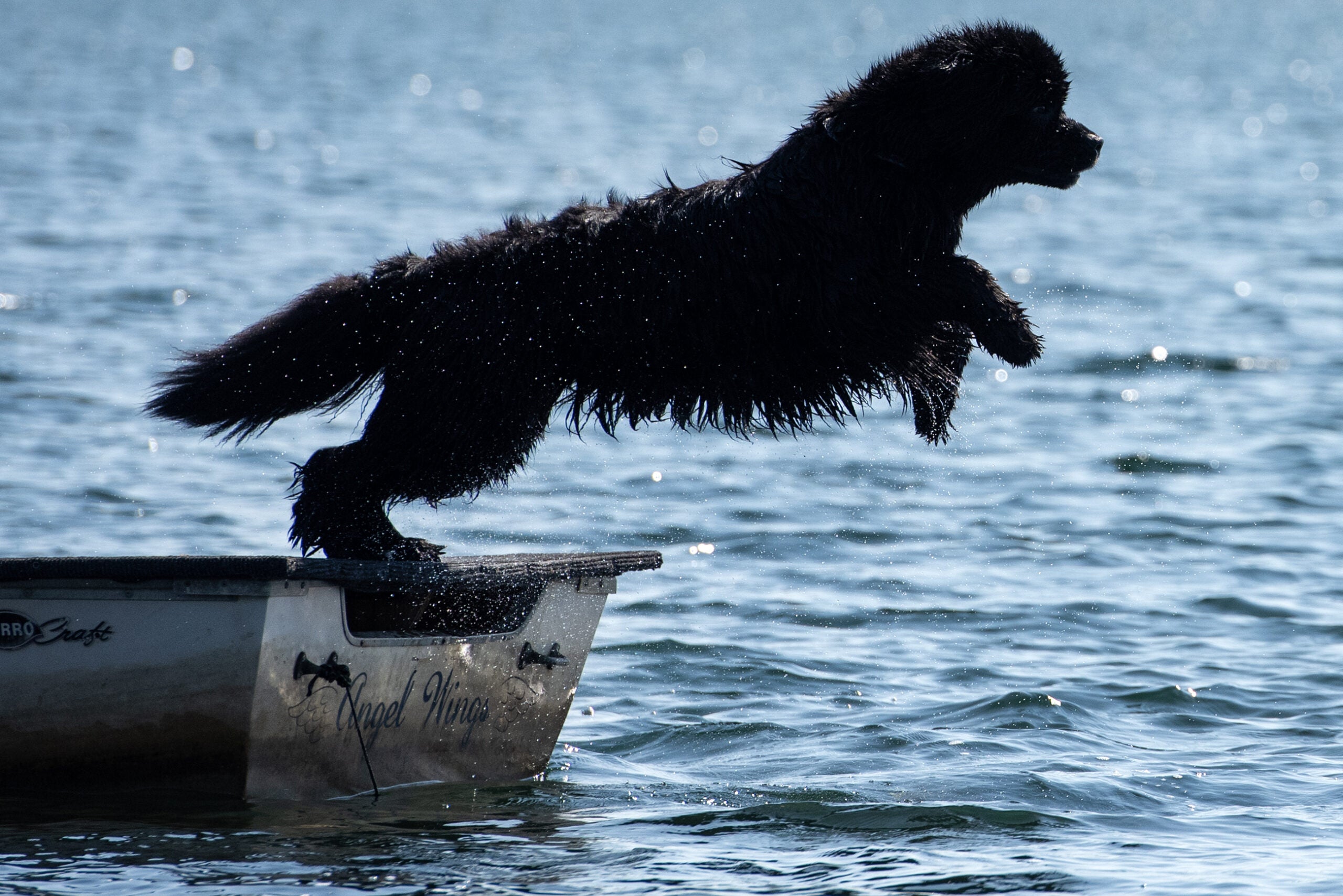
The American Kennel Club says Newfoundland dogs can weigh up to 150 pounds and reach nearly 30 inches at the shoulder. In other nations like Italy, Newfoundlands work in water rescue operations year-round.
In Wisconsin, Baker-Austin said the club’s water tests lack any official certification for water rescue. But nonetheless, she said it’s important for dogs to have the chance to use their instinctive skills.
On “The Morning Show,” Baker-Austin spoke about the breed’s typical training routine, water instincts and calm temperament.
The following was edited for brevity and clarity.
Kate Archer Kent: Why are Newfoundlands a good breed for water rescues?
Dona Baker-Austin: They are a large, sturdy, substantial dog that was specifically bred for the purpose of swimming. And what’s really fascinating is they have webbed feet. That helps them move through the water.
I know a lot of people are familiar with dogs swimming, and they do what we call the “doggy-paddle.” But Newfoundlands do not swim like that. They actually have a modified breaststroke, which is pretty fascinating to see. If you ever watch them swim in clear water, you’ll see that they can actually swim rather than doggy-paddle.
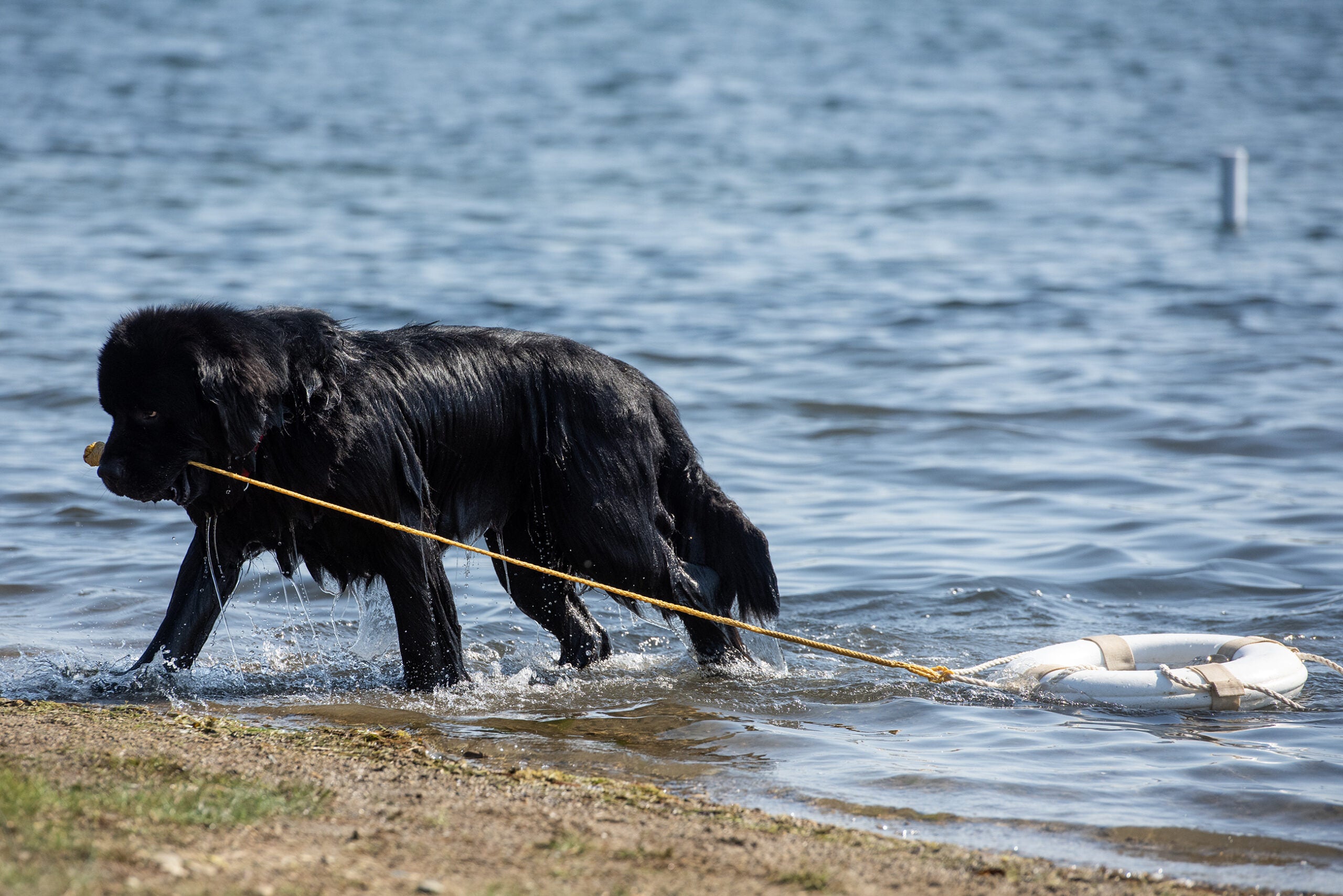
KAK: What do water tests consist of?
DBA: There are three levels to our titles. They’re called “water dog,” which is our junior level; “water rescue dog,” which is our senior level; and the highest level is called “water rescue dog excellent.” Our test also has a “tadpole” title which is kind of a beginner fun thing to get your dog started.
A lot of the tests consist of towing a boat to shore and beaching it. They take a line out to someone calling for help. They jump off the back of a boat for a paddle to bring it back to their handler. These all signify or represent a real lifesaving situation, possibly. It’s pretty fascinating.
KAK: I’m just thinking about them towing a boat, and I can’t even fathom the strength and the ability to do that. What does it take to achieve that level of training?
DBA: A lot of practice and a lot of positive reward between you and your dog. It also takes a great deal of help between you and your fellow Newfoundland lovers. You need somebody rowing the fishing boat. You need somebody calling for help in the boat for you. It really takes a village to help train for those titles.
The ability with them and their soft temperament with children is superior to any other dog. Not to say that other dogs aren’t. The Newfoundlands just gravitate to people and it’s pretty fascinating.
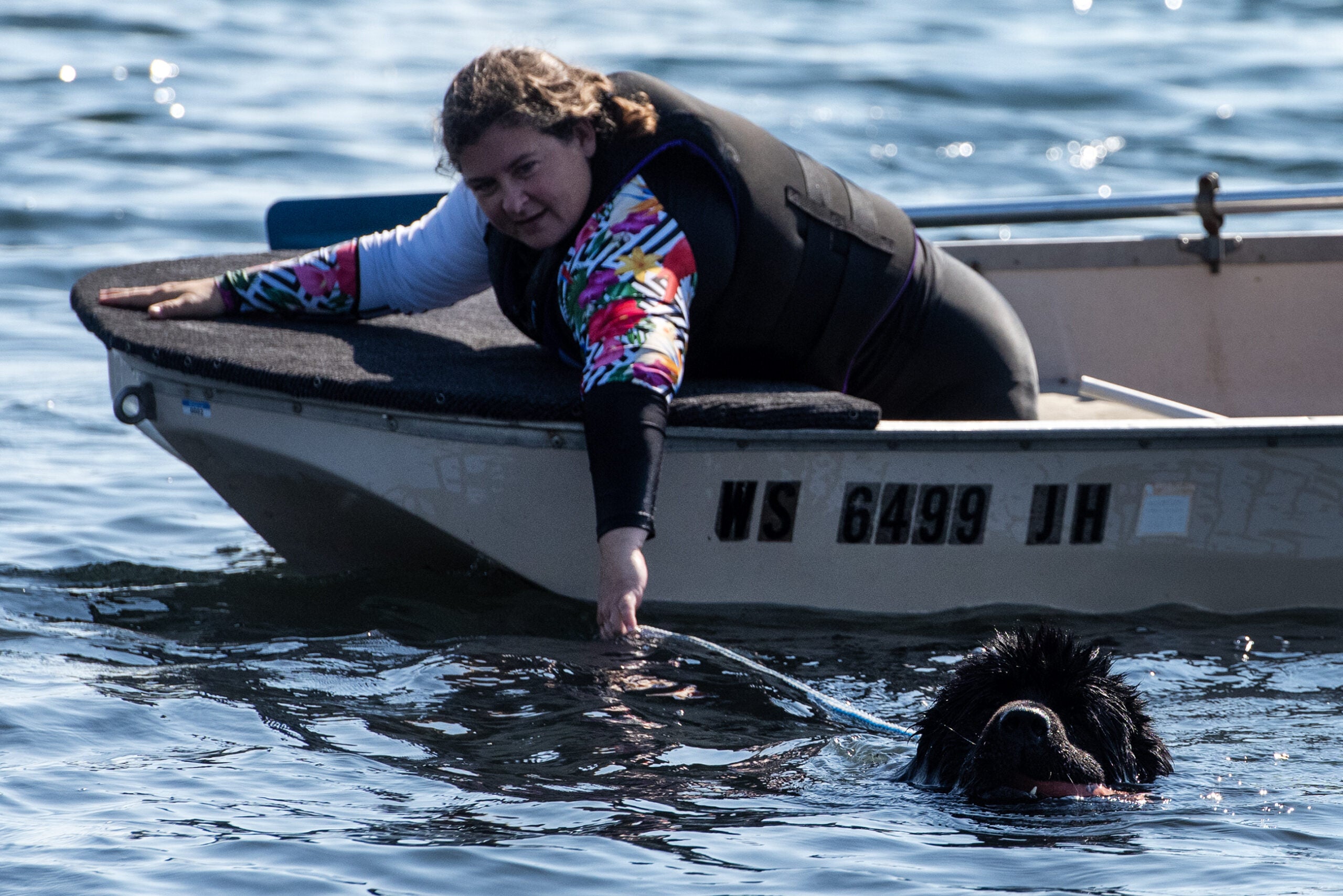
KAK: What can we learn from the way these dogs approach water rescues that could possibly improve how human lifeguards do their job?
DBA: They instinctually read what’s going on in the wate, and they are so observant of their surroundings. I feel as a lifeguard, which I was as a younger person, you need to be aware of everything around you.
I had a dog that I was training for the highest level, and I was training with a person who was not an experienced swimmer. And the dog would not leave her side. That’s what you’re learning from them — to watch your surroundings and read people internally.
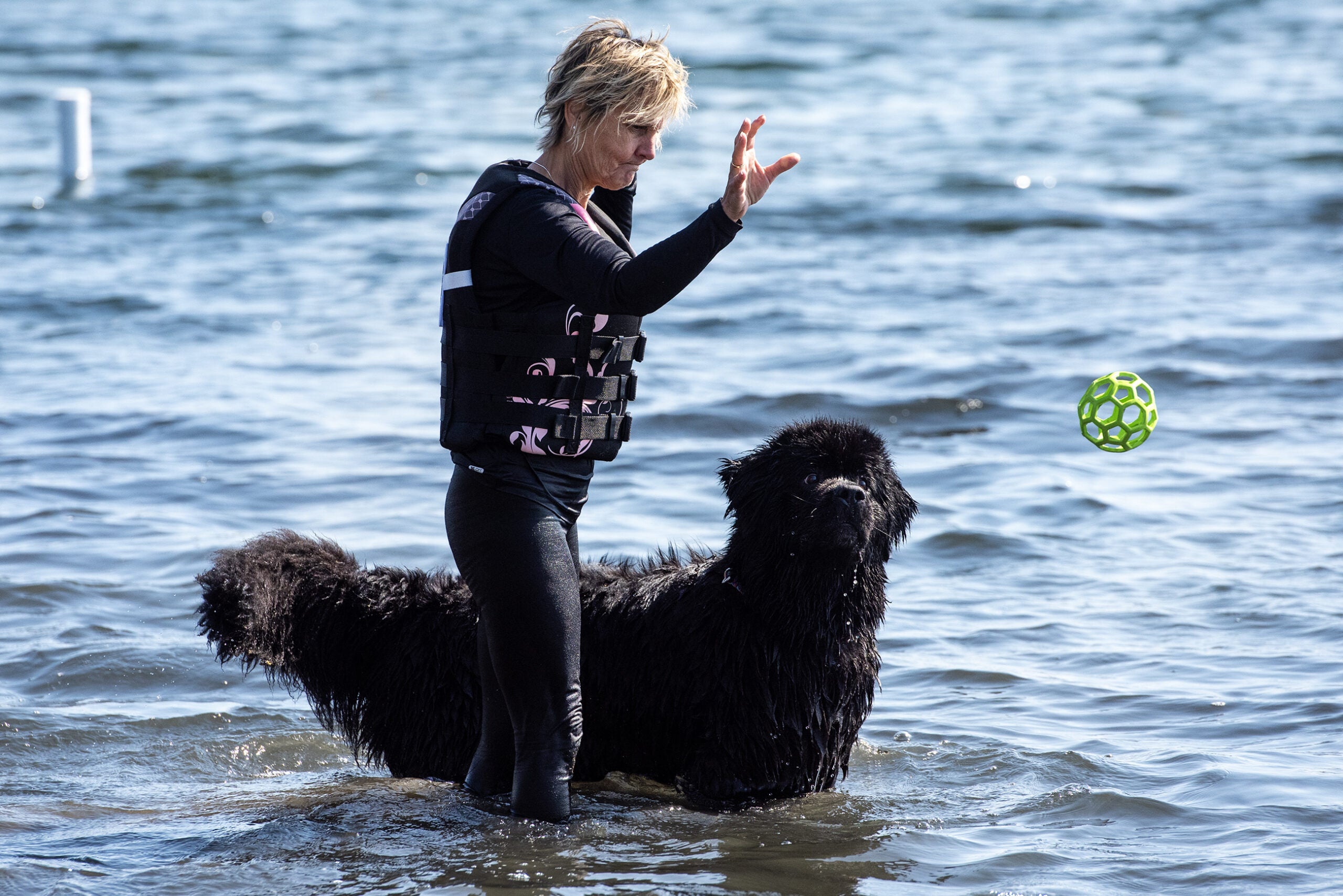
KAK: What is your training routine like for your dogs prior to a water test?
DBA: We pretty much have a daily routine. The conditioning of a dog is important and especially for an athletic dog. We take longer, more conditioning walks. We do a lot of balance and agility training. A balanced diet is important. But in the water, we just swim. The muscles they use when swimming are not the same as land muscles. We really need to make sure that they are able to swim at distances.
KAK: What is your response to people that are concerned about the welfare of dogs like Newfoundlands that are assigned to practical tasks?
DBA: I think it’s important that a dog that is bred for a specific task, that they’re able to do that and enjoy that ability, like a herding dog herding cattle or sheep. Our Newfoundlands love the water.
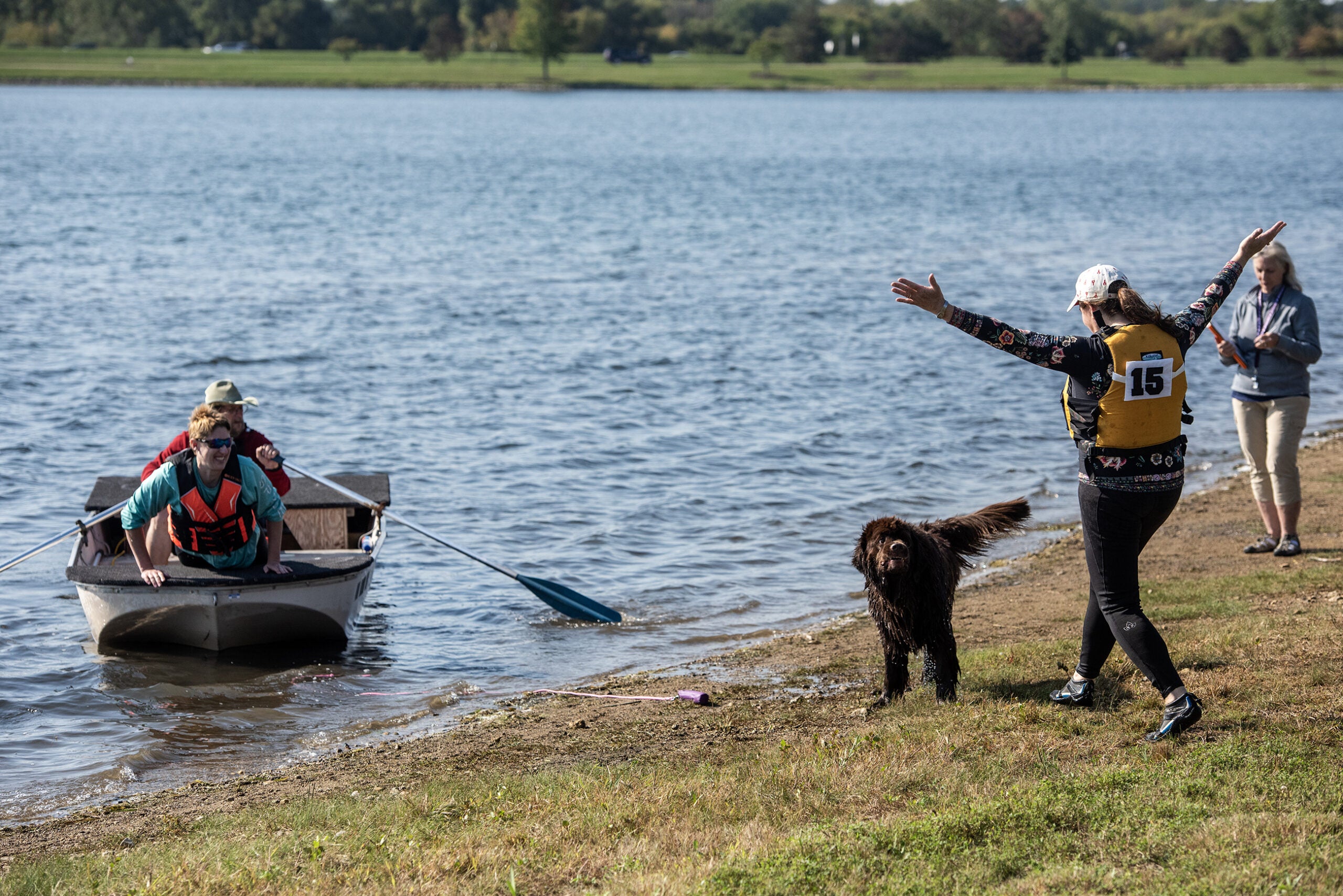
Wisconsin Public Radio, © Copyright 2026, Board of Regents of the University of Wisconsin System and Wisconsin Educational Communications Board.
